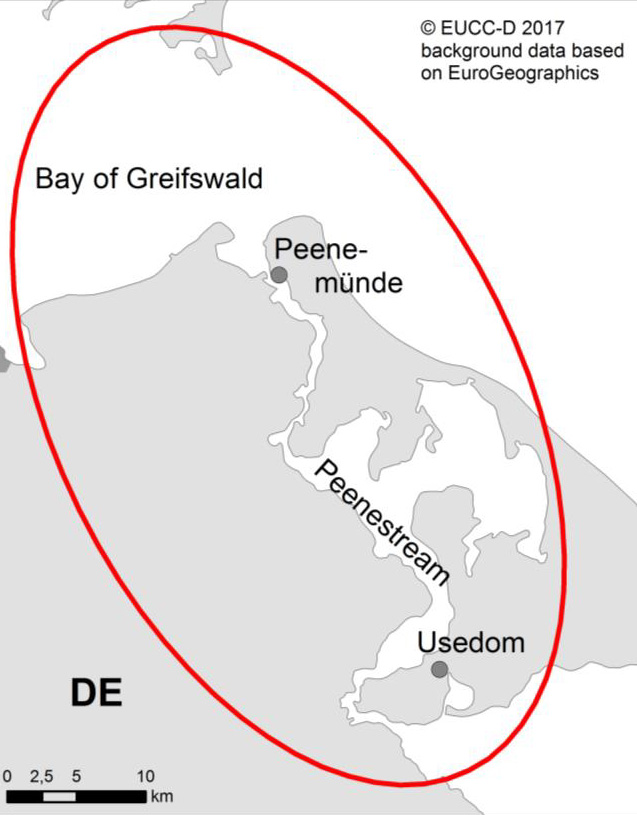Case study: Peenemünde, Germany
The case study will exploit the touristic potential of Peenemünde in a sustainable way and thus support the sustainable development of coastal angling tourism in a less developed region in Germany.
Location of study site: Peenemünde is a community on the island of Usedom in Mecklenburg-Western Pomerania, north- east of Germany. The peninsula Peenemünde is located in the east of the bay of Greifswald, which is a border water of the Baltic Sea. The maximum depth of the bay surrounding Peenemünde is 8 to 10 meters. The border areas range from 0,5 to 5 meter depth. These shallow areas often lie dry, depending on the wind conditions. The average salinity of the bay of Greifswald lies at about 6 to 7 psu.
The Peenestream flows into the bay of Greifswald. Thus, the water balance is determined by the Baltic Sea exchange and the inlet of freshwater rivers flowing into the Peenestream. In the Peenestream the salinity declines further south.
The geographic conditions of the study area provide side bays and embedded shoals as well as salt- and freshwater, which is ideal for a large variety of fish. Furthermore, the diverse coastline provides open spaces as well as shadowed areas near the forests.
Target fish species: Herring, garfish, pikeperch and perch
Main angling season: In regard to the targeted fish species, the main angling season is from March till October.
Kinds of angling: Different kinds of angling are conducted by wading or from the cutter. The specific angling type depends on the targeted species.
Target group (customers): The target group focuses on single anglers as well as angle groups and societies. The region offers a range of activities for families, disabled anglers, children and youth groups, female angler groups, but also for visitors seeking nature based recreational activities.
Available infrastructure: Angler camp with hotel, restaurant, camping site, boats, 2 guides
Development of angling tourism: The development of coastal angling tourism in Peenemünde is rather new. The peninsula of Peenemünde was privately bought by two individuals, who recognized the economic potential of the area. Since then a range of new touristic facilities (e.g. hotel, restaurant) was build and new angling activities were developed. The most recent development is caused by new regulations on angling cutters and the reduced catch quota of cod, providing new challenges for some and threatening the occupational existence of others.
Points of sustainability:
- Regulations concerning closed seasons, the minimum size and concerning some fish species even the maximum catch quota per day are in place for pikeperch, perch and garfish. Furthermore, it is prohibited to use live baitfish, keep captured fish alive in a setting net, angle without meaningful utilization of the catch, troll in the bays and lagoons and use equipment with which the fish can be injured.
- The development of Peenemünde as an angling tourism site provides new employment opportunities and economic possibilities for small, local businesses in the less developed region.
- The angling site was integrated in the surrounding protected area and is based upon common interests of the regional planning of the local community, the tourism industry, a range of angling associations and regional authorities.
Known problems:
- Rules and regulations on cutters are restricting the industry.
- High requirements for certificates for captains – past certificates are no longer valid.
- Costs for insurance and employees are rising.
- Need for networking within the angling sector, especially cross-border
Marketing slogan: „Angeln – Erholen – Natur erleben“ (Angling – Recreation – Nature experience)
Website: www.halbinsel-peenemuende.de, www.molabeach.com
Contact: Nardine Stybel, , EUCC – The Coastal Union Germany

